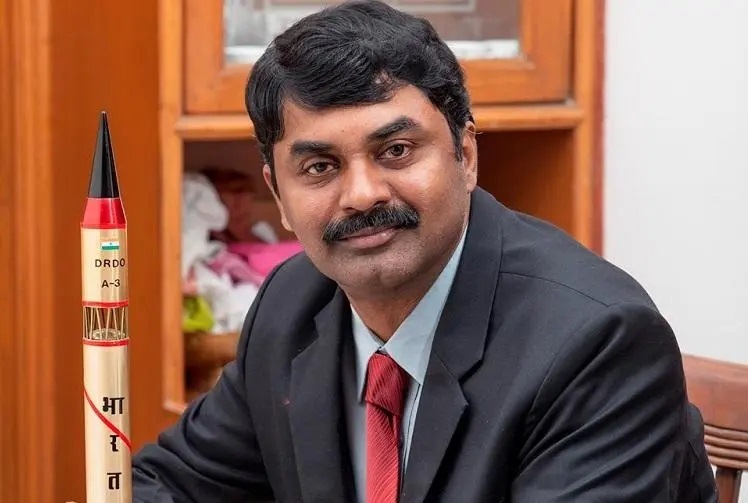You were instrumental in putting thrust into advanced material technology, core technologies and engine technology—which are termed as some of the most complex and advanced technologies. How far we have succeeded?
In recent times, many new materials and related technologies have been developed in the country. The Material laboratory DMRL along with DAE, ISRO, CSIR and Industries like Midhani, IREL, and NALCO have worked together in developing many advanced materials indigenously.
Today, the complete composite materials, ceramics and single crystal blades for helicopters are manufactured by the industry. Many National Committees have worked and generated policy papers laying the road map for self-reliance in Materials. Synergistically all the organisations and Academia are working to develop advanced materials, models and manufacturing technologies.
India succeeded in developing verities of hi-calibre surface-to-surface missiles, surface-to-air missiles, air-to-air missiles, and anti-tank missiles. What will be next, especially in the rapidly advancing technologies and warfare too?
Now, ship-launched and air-launched anti-ship missiles are being developed indigenously in a big way. Recently ship launched short-range SAM has been flight tested successfully. Thanks to the Indian Navy (IN) for allotment of a ship, and committing themselves to indigenization, the ship was modified, integrated with the radar, and vertical launch system and tested the missile in a record short time.
Also, a variety of air-launched missiles, with multiple ranges including ARMs are in an advanced stage of development. Even Drone-based precision-guided systems are being developed.
One of the biggest initiatives that started under your leadership where DRDO itself gave 150 Development-cum-Production Partnerships (DCPPs) contracts. Will DRDO continue to work on these models?
DCPP is being implemented in a big way for all systems and has become a successful model to involve industry abinitio during the development phase for all development projects. The industry is being seen as an equal partner in all advanced weapon system development. This model reduces the time cycle from development to production, with the concurrent involvement of industry in development. Simultaneously TOT happens and the industry will have a better appreciation of technology. The first prototype itself comes from Industry. Also, with the knowledge gained, the industry will be able to develop the next versions of the system. The model helps the industry to come up as world-class.
Despite many successes, why India could not develop a military-grade UAV in the MALE or HALE category?
A medium-altitude long-endurance (MALE) UAV is very much in the advanced stages of development. Completed critical milestone trajectories and endurance flights, meeting the top essential parameters. Many technologies and subsystems required have been developed, making the Indigenous Content very high.
The recent success of the LCA –NP5 prototype opened a new frontier for DRDO. How did we manage to turn around in the shortest time?
It is the hard work of ADA and DRDO scientists along with HAL Engineers, Industry and the Indian Navy that made it possible. It is a capability developed indigenously which will pave the way for advanced naval fighter aircraft development in the country.
The LCA Navy offers hands-free ski jump take-off and landing modes and is carrier-compatible for combat missions with Air-to-Air weapons. Indigenously developed AESA radar on LCA is also a game changer. LCA Navy NP5 incorporates all improvements identified during the exploitation of NP1 and NP2 is a production-ready aircraft. LCA- NP5 joining the naval platforms will help to accelerate flight testing activities which will provide designers vital inputs towards the design and development of TEDBF.
India is in the midst of developing a fifth-generation Advanced Medium Combat Aircraft (AMCA), Twin Engine Deck-Based Fighter (TEDBF), Tejas Mk2 and a jet engine. Do you think DRDO has been laden with too many missions of national importance? Is it possible to do so?
When a country needs and demands the development of certain advanced systems like stealth fighter aircraft, and LCA Mk – II, then have to be met at all costs. Especially in the current global scenario, dependency on any foreign source is not in the interest of the Nation. Experiences with imports and perineal dependence on spare parts show Atmanirbharata in defence is essential.
As a premier govt department responsible for defence R&D in the country, DRDO has to take up these challenges in mission mode and put its best foot forward with clear strategies and planning with the involvement of industry partners during the development phase itself can help to meet the tasks in hand. SPV models may be invoked to share the roles and responsibilities and develop efficiently and quickly.
With a total allocation of Rs 23,264 crore in 2023-24, DRDO is severely hard-pressed for a sufficient budget for a plethora of advanced military projects underway. How do you look at the budgetary constraint?
DRDO has been getting the required budgetary support based on the needs of the day. In the last 9 years, the budget of DRDO has been enhanced by more than double. Based on the projects taken up and projected funding requirements, Govt has been allocating the required budget.
What is often debated is the lack of R&D and meagre budget—which is prevalent among the Indian private industries. What could be the incentive for them to create an environment of higher spending?
Govt has put an embargo on imports and committed to indigenisation and atmanirbharata in defence. PM has set an export target of 5 billion USD, which is possible only with the augmentation of R&D in the industry.
The government’s commitment to bulk orders on Indian industries is a great incentive for private industry to invest in defence R&D. Govt has allotted 25% of the defence R&D budget to Industries and Academia. Schemes like IDEX and TDF are supporting Startups and MSMEs in a big way. This is the best time for the industry to show positive steps towards enhanced spending in defence R & D.


